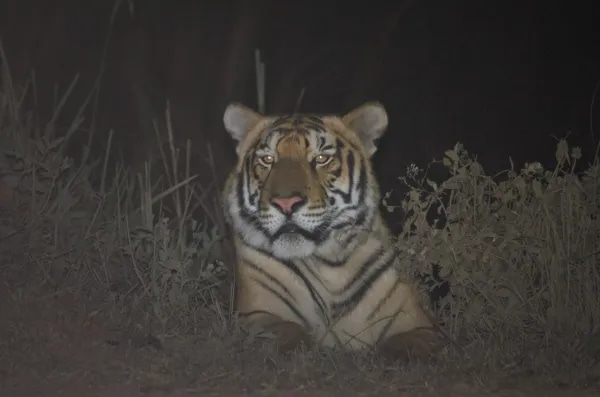
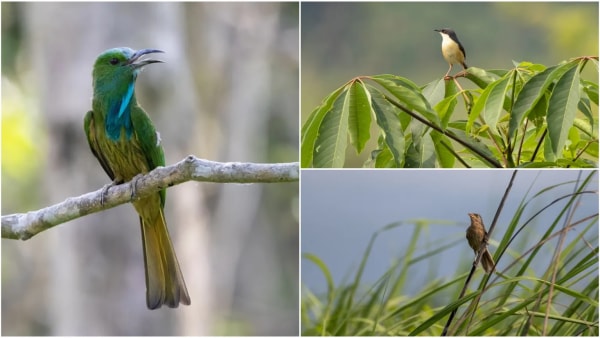
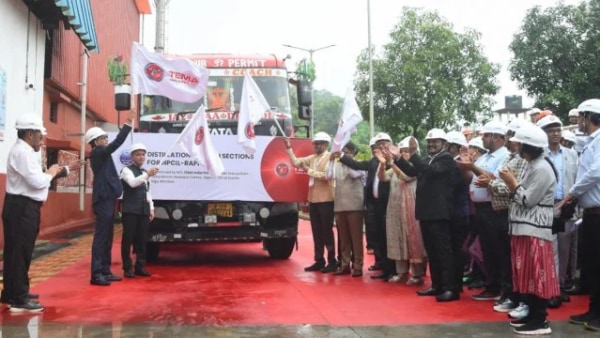
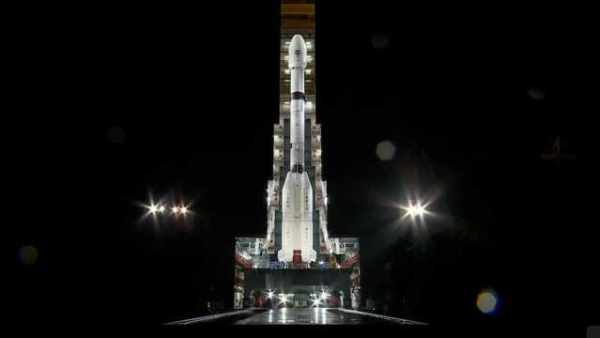
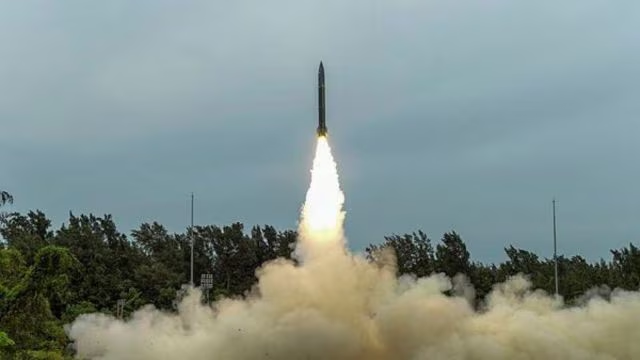
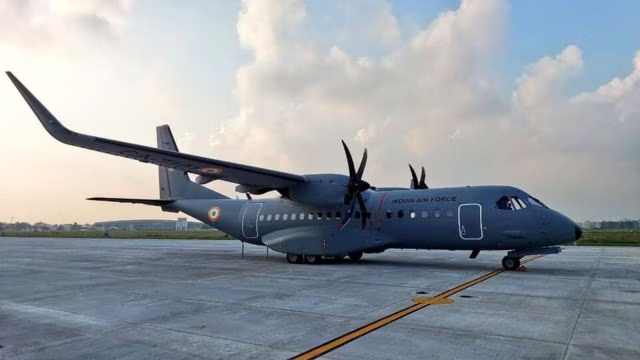
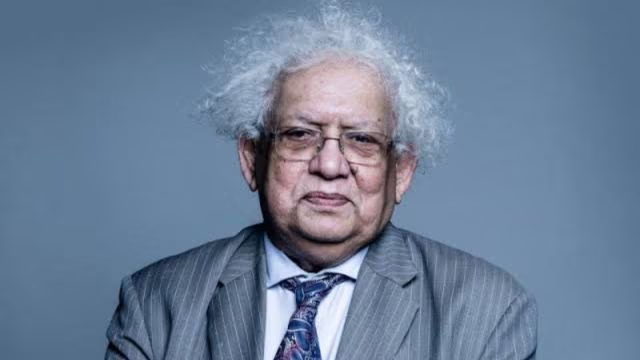
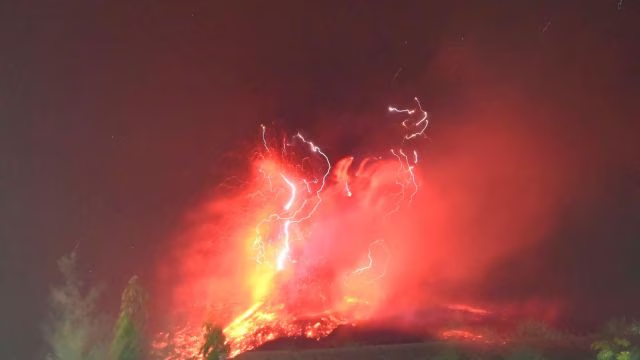


Every Monday, we bring you UPSC Current Affairs Pointers—a concise, exam-focused guide to help you stay ahead in your Prelims and Mains preparation of UPSC and other competitive examinations.
Report
(FYI: The data provided in these reports can be used to substantiate your Mains answer and create a broad understanding of the topic.)
— The report titled ‘State of women in the blue-grey collar workforce 2025’ was released by Quess Corp and Udaiti Foundation, noting that “Income is a make-or-break factor driving women’s exit from the blue-grey collar workforce.”
— According to the report, Low wages are holding women back from formal employment – 54 per cent of blue- and grey-collar women employees are unhappy with their pay and 80 per cent saving nothing or less than Rs 2,000 per month.
— The report found that blue- and grey-collar women employees earn just 70 per cent of what men do, and that low wages, combined with high opportunity costs like unpaid caregiving, time lost to commuting, or the cost of migration, make it difficult for women to “sustain at work”.
Event
— Global Tiger Day is a global observance that seeks to preserve tigers’ natural habitats and raise public awareness and support for conservation efforts worldwide. The day is celebrated on July 29 annually.
Story continues below this ad
— It was first established in 2010 at the Saint Petersburg Tiger Summit, highlighting the alarming decline in tiger populations and the urgent need for conservation efforts.
— The theme of this year is “Securing the future of Tigers with Indigenous Peoples and Local Communities at the heart.”
| Facts about the Tiger |
| 📍Scientific Name: Panthera tigris
📍Weight: 220–660 pounds 📍Length: 6–10 feet 📍Wildlife Protection Act (WPA), 1972 status: Schedule I. 📍IUCN Red List status: Endangered. 📍CITES status: Appendix I. 📍Habitats: Tropical rainforests, evergreen forests, temperate forests, mangrove swamps, grasslands, and savannas. |
Environment

— The first large-scale assessment of the big cat’s population at Kaziranga Tiger Reserve revealed that it has the third-highest density of tigers in the world.
Story continues below this ad
— This was declared in the summary report for 2024 titled ‘Status of Tigers in the Kaziranga Tiger Reserve’, with the findings of a Phase IV tiger monitoring initiative across Eastern Assam, Nagaon, and Biswanath Wildlife Divisions.
— The survey documented 148 tigers in the reserve, up from 104 recorded in 2022, 99 in 2018 and 96 in 2014. It has an estimated 18.65 tigers per 100 square kilometres, making it the third-highest density of tigers in the world, after Corbett Tiger Reserve in Uttarakhand and Bandipur Tiger Reserve in Karnataka.
— Also, in the recent Mann ki Baat radio programme on July 27, Prime Minister Narendra Modi highlighted a “first-ever grassland bird census” in Assam’s Kaziranga National Park and the technology used for this.
— Between March 18 and May 25, a survey to record the grassland bird population in Kaziranga National Park was undertaken by a team of forest officials, scientists, and conservationists.
Story continues below this ad
— It recorded a total of 43 grassland bird species, including 1 Critically Endangered, 2 Endangered, and 6 Vulnerable species, according to the IUCN Red List.
— A new methodology was deployed in the survey, passive acoustic recording monitoring, which enabled non-invasive and continuous monitoring even in inaccessible and high-risk areas.
— The acoustic recorders were placed in tall trees near grasslands during the breeding season of the birds, between March and May. This is the season when they are very vocal, calling out for mates and with males defending territory. The instruments recorded all the birds singing in the landscape.
— The Birdnet tool was also used, which uses machine learning to try and identify species by bird song.

Story continues below this ad
— The survey prioritised 10 species that are either globally threatened or endemic to the Brahmaputra floodplains:
| Species | Scientific Name | IUCN Red List status |
| Bengal Florican | Houbaropsis bengalensis | Critically Endangered |
| Swamp Francolin | Ortygornis gularis | Near Threatened |
| Indian Grassbird | Graminicola bengalensis | Near Threatened |
| Finn’s Weaver | Ploceus megarhynchus | Endangered |
| Swamp Grass Babbler | Laticilla cinerascens | Endangered |
| Jerdon’s Babbler | Chrysomma altirostre | Vulnerable |
| Slender-billed Babbler | Argya longirostris | Vulnerable |
| Black-breasted Parrotbill | Paradoxornis flavirostris | Vulnerable |
| Marsh Babbler | Pellorneum palustre | Vulnerable |
| Bristled Grassbird | Schoenicola striatus | Vulnerable |
— The Ramsar 15th Conference of Parties was held at Victoria Falls, Zimbabwe, from 23 July to 31st July 2025.
— India’s resolution on ‘Promoting Sustainable Lifestyles for the Wise Use of Wetlands’ was adopted at the Conference.
— It recognises that adequate individual education and skills can further accelerate collective efforts for sustainable consumption and production and promote more sustainable lifestyles.
(Source: PIB)
Story continues below this ad
Science and Technology
 Mumbai-based TEMA India will test the equipment required for upgrading depleted heavy water. (Express Photo)
Mumbai-based TEMA India will test the equipment required for upgrading depleted heavy water. (Express Photo)
— In a significant step, India’s nuclear establishment has, for the first time, roped in private players to carry out a key process that was so far handled entirely in-house.
— Mumbai-based TEMA India has been entrusted with testing the equipment required for upgrading of depleted heavy water, a crucial requirement at all Pressurised Heavy Water Reactors in India.
— Until now, the testing was done by the country’s main nuclear research, Bhabha Atomic Research Centre (BARC).
— The test facility by TEMA India was inaugurated at Achchad in Palghar district, about 100 km north of Mumbai, where it will manufacture equipment such as distillation columns and integrate and test them before sending them to reactor sites for installation.
Story continues below this ad
— Heavy water (D2O) is a form of water (H2O) with deuterium, a heavier isotope of hydrogen, instead of regular hydrogen, and is used as a coolant as well as moderator for slowing down fast-moving neutrons during a chain reaction, essential for sustaining the nuclear fission process.
— D2O needs to be 99.9% pure for working efficiently. But with time, it gets contaminated with light or regular water, requiring the depleted D2O to be upgraded back to 99.9% using a distillation process.
Why is it important?
— India has set its eyes at achieving 100 GW of installed nuclear energy capacity by 2047. There are 24 nuclear reactors operational in India, with an installed capacity of 8,780 MW.
— The immediate target is to achieve 22.4 GW of installed capacity by 2032. The government has also launched a `20,000-crore Nuclear Energy Mission to develop Small Modular Reactors.
Story continues below this ad
— Indian Railways successfully tested the first hydrogen-powered coach or driving power car earlier this week at its Integral Coach Factory (ICF) in Chennai.
— This marks a key milestone in the national transporter’s quest to build India’s first hydrogen-powered train, something only a few railways in the world have tried, with a bulk of the projects still in the trial phase.
— Indian Railways’ Northern Railway zone has undertaken this project which began in 2020-21.
— The total cost of the project is approximately Rs. 136 crore. The primary design, validation, and testing is being undertaken by Indian Railways’ Research Design & Standards Organisation (RDSO).
 GSLV-F16 – Post Integration, reaching Its Last Pre-Launch Position. (Photo:/Videograb/X@ISRO)
GSLV-F16 – Post Integration, reaching Its Last Pre-Launch Position. (Photo:/Videograb/X@ISRO)
— The NASA-ISRO Synthetic Aperture Radar (NISAR) satellite was successfully launched on July 30, 2025, through the Geosynchronous Satellite Launch Vehicle (GSLV)-F16 rocket from the Satish Dhawan Space Centre at Sriharikota in Andhra Pradesh.
— NISAR, which stands for NASA-ISRO Synthetic Aperture Radar, is the most powerful Earth observation satellite to be put in space, the result of over one decade of research and development by the space agencies of India and the US.
— SARs are imaging equipment that use the non-visible microwave radiation to create pictures of the Earth from space. Never before have two SARs been mounted on a single satellite.
— The L-band SAR, which uses higher wavelength microwaves, can better penetrate tree cover or vegetation, and even sand or ice. The S-band SAR, which has a shorter wavelength, is unable to go much deeper, but is good for capturing the larger features, such as crop fields or water bodies.
— NISAR satellite would map the entire globe every 12 days, providing a series of detailed images that can have various applications ranging from predicting disasters, helping in rescue efforts afterwards, and developing new models for earthquakes and volcanic eruptions.
— The satellite was deposited in the Sun Synchronous Polar Orbit (SSPO) – an orbit in which the satellite reaches over a place at the same time each day – about 747 km from the Earth, within 19 minutes of the launch. This was the first time that ISRO used its powerful GSLV rocket to drop a satellite in the SSPO.
— The mission life of the satellite is five years.
Defence
 Two consecutive flight tests of Pralay Missile were conducted successfully by DRDO from Dr APJ Abdul Kalam island off the coast of Odisha. (PTI)
Two consecutive flight tests of Pralay Missile were conducted successfully by DRDO from Dr APJ Abdul Kalam island off the coast of Odisha. (PTI)
— India has successfully test-fired the newly developed tactical missile Pralay, which is capable of carrying conventional warheads. The missile was test-fired from the APJ Abdul Kalam island off the coast of Odisha
— Pralay is a short-range surface-to-surface missile with a payload capacity of 500-1,000 kg.
— The missile, capable of carrying conventional warheads, has a range of 150 to 500 km. It has been developed by the Defence Research and Development Organisation (DRDO).
— INS Satpura participated in the 32nd edition of the Singapore-India Maritime Bilateral Exercise (SIMBEX-25). This year, it is taking place in Singapore.
— SIMBEX series of exercises began in 1994 and were initially known as Exercise Lion King.
— At least three militants were killed in the Dachigam forest area on the outskirts of Srinagar during the Operation Mahadev conducted by the Indian forces.
 India signed a contract with Airbus Defence & Space, Spain, for acquisition of 56 C-295MW transport aircraft for IAF in Sep 2021. (Wikimedia Commons)
India signed a contract with Airbus Defence & Space, Spain, for acquisition of 56 C-295MW transport aircraft for IAF in Sep 2021. (Wikimedia Commons)
— India on Saturday (2nd August) received the last of its 16 Airbus C-295 military transport aircraft from Spain, marking an important milestone in strengthening its defence capabilities
— The aircraft, with a flight endurance of up to 11 hours, is a versatile and efficient tactical transport aircraft.
— India signed a contract with Airbus Defence & Space, Spain, for acquisition of 56 C-295MW transport aircraft for IAF in Sep 2021. Under the C-295 programme, a total of 56 aircraft are to be delivered, of which 16 were to be delivered directly by Airbus from Spain, and the remaining 40 will be manufactured in India.
Diseases
— Recently, Singer Justin Timberlake revealed that he has been diagnosed with Lyme disease.
— Lyme disease is a bacterial infection that can be transmitted to humans by infected black-legged ticks, commonly known as deer ticks.
— It can cause flu-like conditions, neurological problems, joint pains and other symptoms. In a majority of cases, Lyme disease is treated with antibiotics and is usually easier to treat if it’s diagnosed early.
— It is caused by a bacterium called Borrelia burgdorferi. The tick picks it up while biting an infected animal and then transmits it to a human while biting it.
— Lyme disease is more common in temperate forests and tall grasses, especially in North America, Europe, and Asia. Ticks that can transmit Lyme disease are found in India, too, particularly in the Himalayan region.
— Ticks pick up the bacteria from feeding on infected animals, like mice or deer. Once infected, the tick can pass the bacteria to humans through a bite.
— It usually takes a tick attached to the skin for at least 36 to 48 hours to transmit the bacteria.
Persons in News
(Just FYI: Noting historical personalities’ anniversaries aids UPSC prep. UPSC often includes such personalities in questions, so revisiting their lives refreshes your static syllabus.)
 Born on July 10, 1940 in Vadodara to Jagdish Chandra, a civil servant, and Mandakini Desai a homemaker, Desai grew up with three siblings (X/@HardeepSPuri)
Born on July 10, 1940 in Vadodara to Jagdish Chandra, a civil servant, and Mandakini Desai a homemaker, Desai grew up with three siblings (X/@HardeepSPuri)
— Eminent India-born British economist, former Labour Party politician, and House of Lords member Meghnad Desai passed away at the age of 85.
— In 2008, he was awarded India’s third-highest civilian honour—the Padma Bhushan.
— He authored numerous books, the most recent being The Poverty of Political Economy: How Economics Abandoned the Poor (2022).
— His other notable books are Marx’s Revenge: The Resurgence of Capitalism and the Death of Statist Socialism, Rethinking Islamism: Ideology of the New Terror, The Route to All Evil: The Political Economy of Ezra Pound, a novel Dead on Time, and The Rediscovery of India.
Places in News
(Just FYI: The location of the place is important, considering that UPSC has asked several questions about places that were in the news, such as Aleppo and Kirkuk, in the 2018 UPSC Prelims. The best way to remember them is to plot them on a world map.)
— An 8.8 magnitude earthquake, one of the strongest on record, struck the Kamchatka Peninsula, in Russia’s far-east, about 6,500 km east of Moscow, on Wednesday (30 July, 2025) morning, triggering a tsunami that struck several countries on both sides of the northern Pacific Ocean.
— The 8.8 magnitude quake is the world’s biggest since the 2011 earthquake off the coast of Japan that generated a 50-foot tsunami wave and led to the Fukushima nuclear plant disaster.
— Kamchatka Peninsula lies on the Circum-Pacific seismic belt, more popularly known as the “Ring of Fire”, that witnesses the maximum number of earthquakes and volcanic eruptions on Earth.
| What is the Ring of Fire? |
| The Ring of Fire is shaped like a semicircle or horseshoe, and stretches for nearly 40,250 kilometres, tracing the meeting points of numerous tectonic plates, including the Eurasian, North American, Juan de Fuca, Cocos, Caribbean, Nazca, Antarctic, Indian, Australian, Philippine, and other smaller plates, which all encircle the large Pacific Plate.
The Ring touches more than 15 countries including the US, Indonesia, Mexico, Japan, Canada, Guatemala, Russia, Chile, Peru, and the Philippines. |
— The Circum-Pacific seismic belt is home to multiple subduction processes, in which the Pacific tectonic plate is clashing against continental land.
— Subduction is a geological process in which one tectonic plate — put simply, a large section of the Earth’s crust — presses against another.
 In this photo released by Geological Agency (Badan Geologi) of the Indonesia’s Ministry of Energy and Mineral Resources, lava glows on the slope of Mount Lewotobi Laki-Laki during an eruption in East Flores, Indonesia, Saturday, Aug. 2, 2025. (AP)
In this photo released by Geological Agency (Badan Geologi) of the Indonesia’s Ministry of Energy and Mineral Resources, lava glows on the slope of Mount Lewotobi Laki-Laki during an eruption in East Flores, Indonesia, Saturday, Aug. 2, 2025. (AP)
— Mount Lewotobi Laki Laki, one of Indonesia’s most active volcanoes, erupted for a second straight day, on 2nd August.
— Saturday’s eruption was one of Indonesia’s largest since 2010 when Mount Merapi, the country’s most volatile volcano, erupted on the densely populated island of Java.
— Lewotobi Laki Laki, a 1,584-meter (5,197-foot) volcano on the remote island of Flores, has been at the highest alert level since it erupted on June 18, and an exclusion zone has been doubled to a 7-kilometer (4.3-mile) radius as eruptions became more frequent.
— Indonesia has 120 active volcanoes and sits along the “Ring of Fire,” a horseshoe-shaped series of seismic fault lines encircling the Pacific Basin.
Sports
(Just FYI: With the unpredictability of the UPSC examinations and questions like the ICC World Test Championship question 2021, you can’t be sure of anything. It is wise to know what it is and not go into too much detail.)
— Divya Deshmukh, aged 19, became the FIDE Women’s World Cup champion by defeating the veteran Koneru Humpy, 38, in the final via the tiebreakers on 28th July. She became the first-ever Indian woman to win the FIDE Women’s World Cup.
— With this, she also becomes the 88th Grandmaster of India, the fourth woman to achieve this feat in India.
— The tournament took place from July 6th to July 28th in Batumi (Georgia).
1st Place – Divya Deshmukh (India)
2nd Place – Humpy Koneru (India)
3rd Place – Tan Zhongyi (China)
4th Place – Lei Tingjie (China)
 Hardeep, orphaned at 8, overcomes odds to win the world title, beating Iran’s Yazdan Delrouz 3-2 in the final. (Photo Credit: UWW / Special arrangement)
Hardeep, orphaned at 8, overcomes odds to win the world title, beating Iran’s Yazdan Delrouz 3-2 in the final. (Photo Credit: UWW / Special arrangement)
— The U17 World Wrestling Championships 2025 was held at the Ano Liosia Olympic Hall in Athens, Greece, from July 28 to August 3.
— Hardeep Singh became India’s first under-17 world champion in the 110kg weight class of Greco-Roman style, recovering from a 0-2 deficit after the first round to beat Iran’s Yazdan Delrouz 3-2 in a nail-biting final.
— According to United World Wrestling, this ‘is the heaviest weight class India has ever won a gold medal at the World U17 level’.
Awards
— The winners of the 71st National Film Awards were announced at the National Media Centre in New Delhi on Friday (1st August).
— National Film Awards were established in 1954, where the Best Feature Film award was given to Shyamchi Aai (Marathi). Coincidentally, the most awarded film in the history of the awards remains Lagaan, directed by jury chief this year, Ashutosh Gowariker.
Test Your Knowledge
(Note: The best way to remember facts for UPSC and other competitive exams is to recall them through MCQs. Try to solve the following questions on your own.)
(1) Consider the following pairs:
How many pairs given above are correctly matched?
(a) Only one pair
(b) Only two pairs
(c) Only three pairs
(d) All four pairs
(2) Consider the following statements about NISAR mission:
1. It was launched through the Geosynchronous Satellite Launch Vehicle (GSLV)-F16 rocket.
2. Similar to the PUNCH mission, it also carries two Synthetic Aperture Radars on a single satellite.
3. The satellite was deposited in the Sun Synchronous Polar Orbit (SSPO).
Which of the following statements is/are correct?
(a) 1 and 2 only
(b) 1 and 3 only
(c) 2 and 3 only
(d) 1, 2, and 3
3. It is a bacterial infection caused by a bacterium called Borrelia burgdorferi. It is more common in temperate forests and tall grasses, especially in North America, Europe, and Asia. It can be transmitted to humans by infected black-legged ticks, commonly known as deer ticks.
The above description is for which of the following diseases?
(a) Lyme disease
(b) Malaria
(c) Giardiasis
(d) P. falciparum
| Prelims Answer Key |
| 1. (d) 2. (b) 3. (a) |
Subscribe to our UPSC newsletter. Stay updated with the latest UPSC articles by joining our Telegram channel – IndianExpress UPSC Hub, and follow us on Instagram and X.
🚨 Click Here to read the UPSC Essentials magazine for July 2025. Share your views and suggestions in the comment box or at manas.srivastava@indianexpress.com🚨
